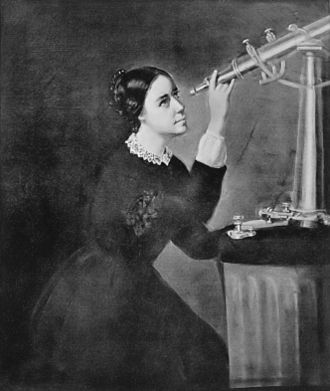In our first Name a Star blog on women in astronomy, we discovered that a group of women did most of the work on the star catalog for which Edward Pickering got credit. Learn how brilliant hard working women advanced the science of astronomy.
In 1881 a team of women at the Harvard Observatory called “computers”, helped photograph and catalog the entire night sky to produce the Henry Draper Catalogue. These women painstakingly performed complex calculations needed to process data from those images. Why was it called the Henry Draper Catalogue? Because the widow of astronomer Henry Draper funded the project to honor her husband and support the women scientists.
In our previous blog, we had fun with the fact that Williamina Fleming, the leader of the women scientists, started out as astronomer Charles Pickering’s housekeeper. However, many of the women on the team were graduates of Harvard affiliated Radcliffe College and scientists in their own right. Antonia Maury helped locate the first double star. Henrietta Leavitt developed a law to determine stellar distances. The most famous of the Harvard computers was Annie Jump Cannon. An expert in astrophotography, she cataloged over 350,000 stars and developed the classification system used today.
Another Radcliffe College graduate, Canadian Helen Sawyer Hogg, is best remembered for researching variable stars in globular clusters and for a long-standing astronomy column she had in the Toronto Star between 1951 and 1981.
Nancy Grace Roman was the first chief of astronomy in the Office of Space Science at NASA Headquarters, and the first woman to hold an executive position at the space agency. Her managed projects include the world-famous Hubble Space Telescope, earning her the nickname, “Mother of Hubble.”
Jocelyn Bell Burnell was part of a team that discovered the first radio pulsars in 1967. Eventually, researchers figured out that radio pulsars are coming from swiftly rotating neutron stars, which are the cosmic leftovers of huge stars that exploded in supernovas. Pulsars have been used for numerous types of studies in the decades since, including testing Albert Einstein’s theory of general relativity. Bell Burnell never received Nobel credit for her work, although other male team members did.
Once again women did the work and men got the credit. Have any women received the Nobel Prize for Astronomy/Astrophysics? Andrea Ghez, a professor of physics and astronomy at UCLA, shared the 2020 Nobel Prize in physics for finding a supermassive black hole stuffed with 4 million suns at the center of our galaxy. Among the four female Nobel Laureates in physics to date, Ghez is the only astronomer. Her award is a pinnacle for women in astronomy and astrophysics.
You may not be able to award a Noble Prize, but you can award a friend of loved one their own star at Name a Star. Check it out.



